Hair care in 2025 is all about personalization, science, and climate awareness. It’s no longer about using the same shampoo for everyone. Now, we understand that each person’s hair is unique and requires a customized routine based on their hair type, porosity, and even where they live.
This guide will help you build a hair care routine that works for you, whether you’re looking for the best shampoo for hair fall, hair growth products, or simply a shampoo for oily hair. From trendy products to expert advice, we’ll cover it all to ensure you give your hair the care it deserves.
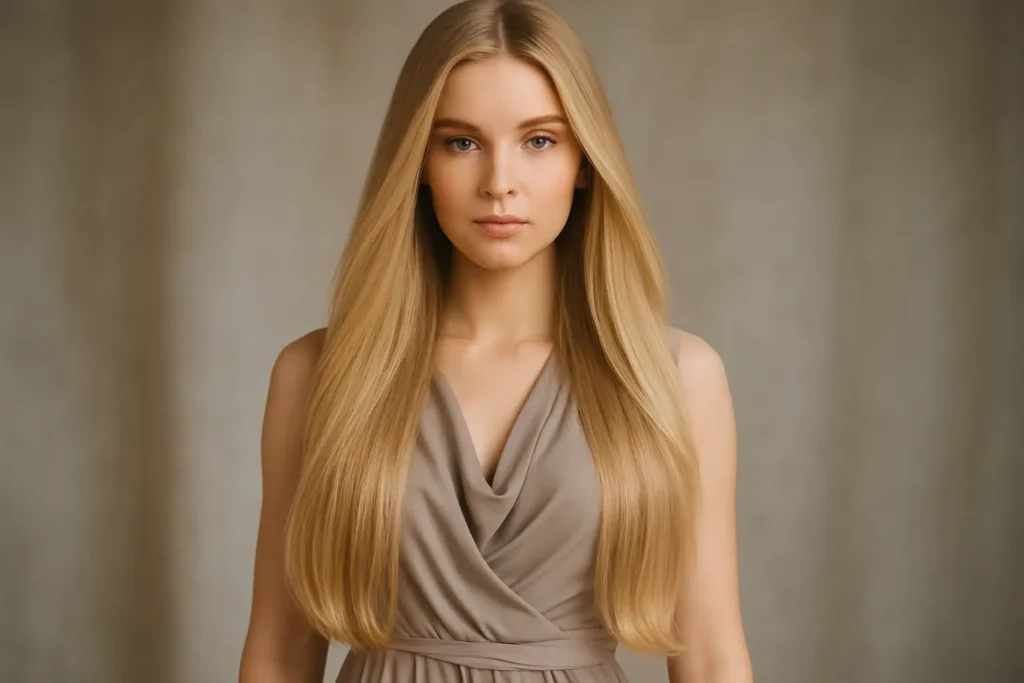
Personalizing your hair care routine means picking products that are made just for your hair needs. Whether you need anti-dandruff shampoo or a dry shampoo for those busy mornings, 2025 is all about customizing your hair routine to fit your lifestyle.
As we move forward, remember that healthy hair starts with a personalized approach. Your hair’s needs are unique, and it’s time to give it the care it deserves.
Know Your Hair: The Key to a Perfect Routine
Understanding your hair is the first step toward building a hair care routine that actually works for you. Everyone’s hair is different, and knowing the basics, like your hair type, porosity, and scalp health can help you choose the best products and techniques for your unique hair needs.
Hair Type: The Foundation of Your Routine
Let’s start with hair type. Are you dealing with dry, oily, or normal hair? Maybe you have a combination of both, where the roots are oily but the ends are dry.
For example, if you have oily hair, using a shampoo for oily hair will help balance oil production while keeping your hair clean. If your hair is dry, you’ll want to choose a shampoo that provides extra moisture, like a sulfate-free shampoo, which is gentle and doesn’t strip away your hair’s natural oils.
Understanding Hair Porosity: What It Means for Your Hair Care
Next up: hair porosity. This refers to how well your hair absorbs and retains moisture. There are three main types of porosity: low, medium, and high.
If you have high porosity hair, your hair may absorb moisture quickly but lose it just as fast. This type of hair benefits from heavier products like deep conditioners and hair masks.
Low porosity hair, on the other hand, has trouble absorbing moisture and may need lighter products like curly hair products or leave-in conditioners to avoid weighing it down.
Testing your porosity is simple: just drop a few strands of hair into a glass of water. If your hair sinks quickly, it’s high porosity. If it floats or takes time to sink, it’s low porosity.
Understanding this will help you choose the right hair care products that provide the right level of moisture for your hair type.
Scalp Health: The Secret to Stronger Hair
Your scalp is the foundation of your hair growth. If your scalp is dry, flaky, or irritated, it can affect the health of your hair.
Using an anti dandruff shampoo can help soothe and balance your scalp, especially if you suffer from dandruff or itching.
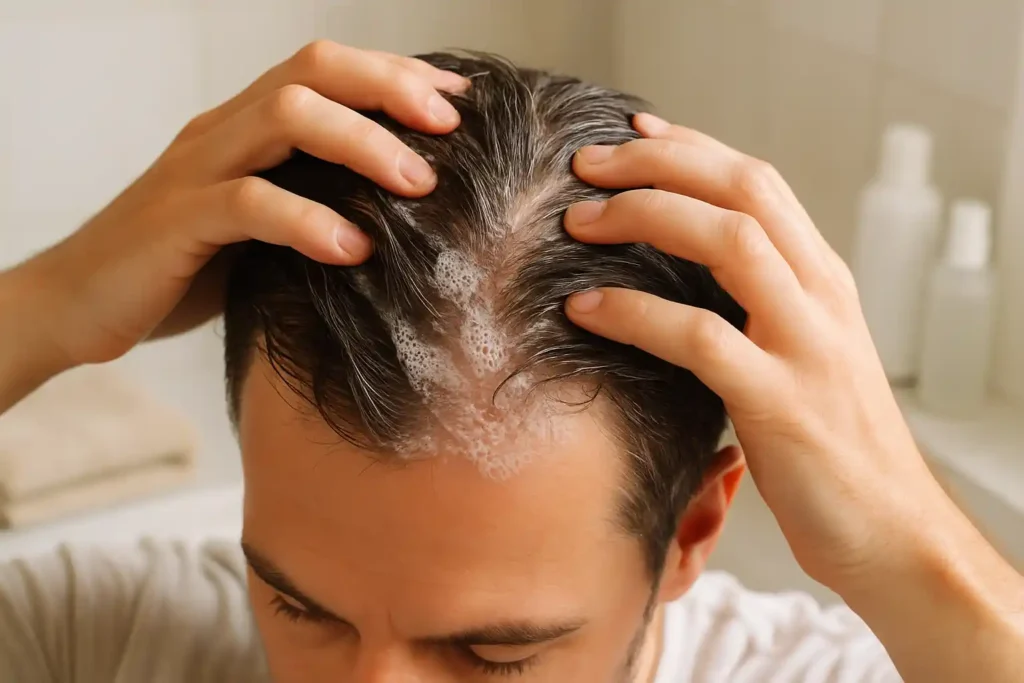
If you have an oily scalp, opt for a sulfate-free shampoo that cleanses without stripping your scalp’s natural oils. A clean, healthy scalp creates the perfect environment for hair to grow strong and thick.
Why Knowing Your Hair Matters
Understanding your hair type, porosity, and scalp health allows you to build a personalized hair care routine. Whether you’re looking for hair growth products or need a shampoo for oily hair, knowing what your hair needs is the first step toward healthy, manageable locks.
The more you learn about your hair, the better you’ll be at choosing the right products for your needs. So take the time to get to know your hair, because when you understand your hair, you can give it the care it truly deserves.
How Often Should You Wash Your Hair? Finding the Right Balance
When it comes to hair care, one common question is, “How often should I wash my hair?” The answer varies based on factors like hair type, scalp condition, and lifestyle.
How Often to Wash?
If you have oily hair or an oily scalp, you may need to wash your hair more often, perhaps every other day or even daily. Using shampoo for oily hair helps control excess oil without over-drying the scalp.
On the other hand, if you have dry or curly hair, washing too frequently can strip away natural oils. For these hair types, once or twice a week is usually enough. Using sulfate-free shampoo and curly hair products can help maintain moisture and define curls.
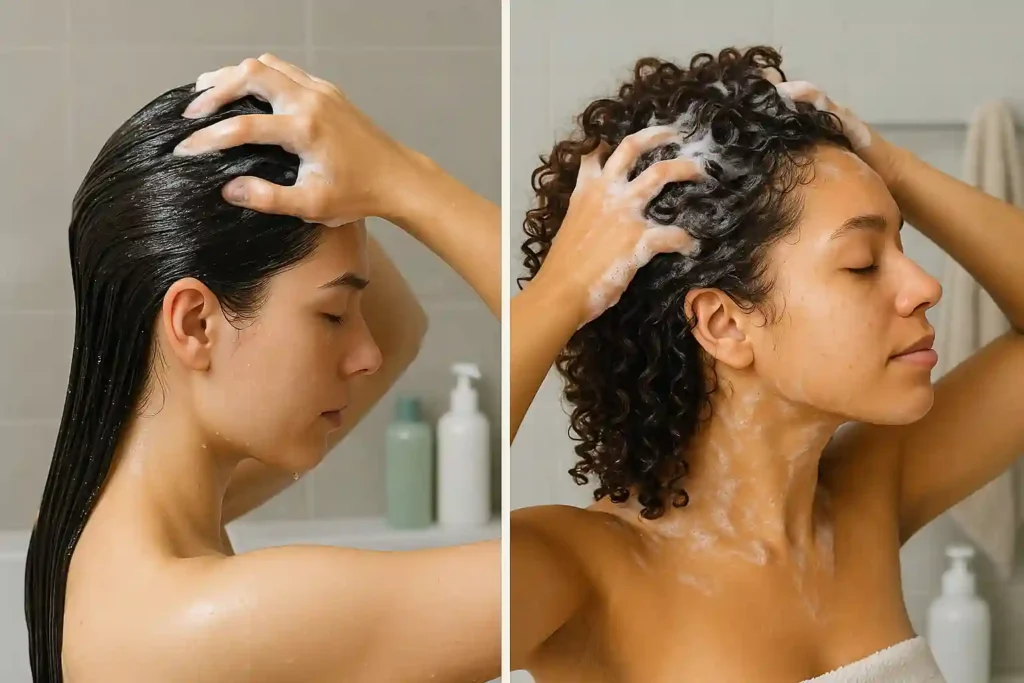
Factors That Affect Your Routine
Your washing frequency can also depend on:
- Scalp Type: Oily scalps need more frequent washing, while dry scalps need less.
- Climate: Humid weather can make your scalp oilier, while cold weather can make it drier.
- Activity Level: If you sweat a lot or use styling products like dry shampoo, more frequent washing may be needed to prevent buildup.
Can Over Washing Damage Hair?
Over washing can lead to dry, brittle hair, especially with shampoos that contain sulfates. Sulfate-free shampoo is gentler on your hair, keeping it healthy without stripping away its natural oils. If your hair feels dry after washing, you might be washing it too often.
Finding the right washing routine is key. Pay attention to how your hair feels and adjust based on your hair type, climate, and activity level to maintain a healthy hair care routine.
The Secret to Healthy Hair Growth: What Really Works
Everyone wants healthier, fuller hair, but figuring out what actually works can be tricky. The good news is that there are proven methods and products that can support hair growth and keep your hair strong and vibrant.
Healthy Scalp, Healthy Hair
The first step to promoting hair growth is taking care of your scalp. A clean, nourished scalp creates the perfect environment for hair to grow.
If you struggle with an itchy or flaky scalp, using an anti-dandruff shampoo can help maintain scalp health.
It’s important to choose products that don’t strip your scalp of essential oils, so a sulfate-free shampoo is a great option for gentle cleansing.
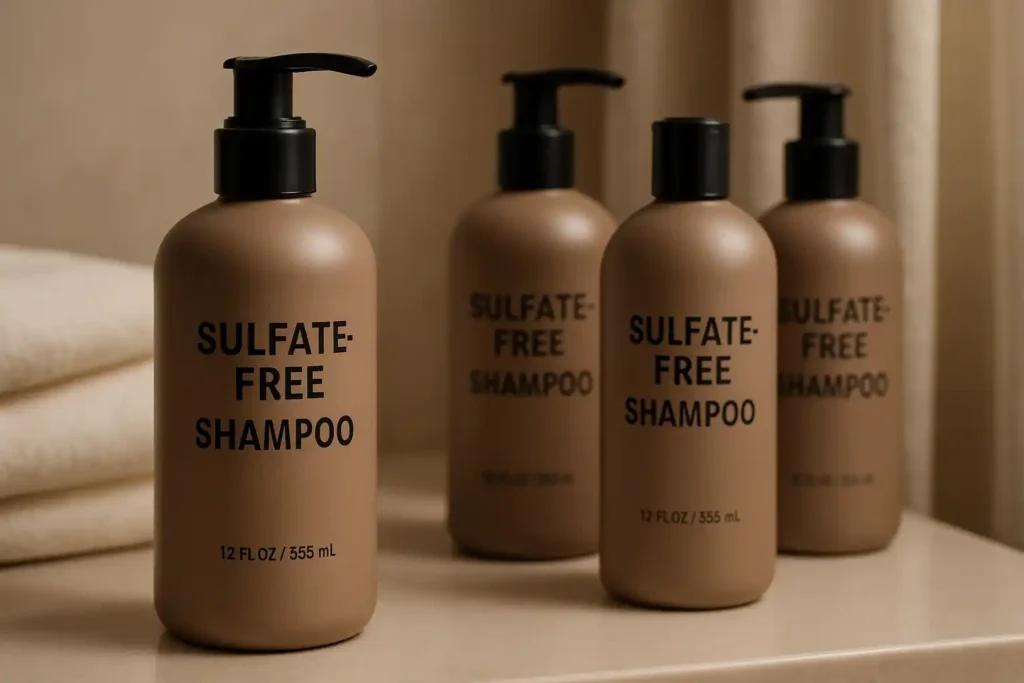
The Power of Hair Growth Products
In addition to a healthy scalp, hair growth products can provide extra support. Hair growth products like rosemary oil or biotin supplements are known to help stimulate hair follicles and encourage growth.
You can also try shampoo for hair fall if you’re dealing with thinning hair. These shampoos often contain ingredients like caffeine or biotin that strengthen hair and reduce hair shedding.
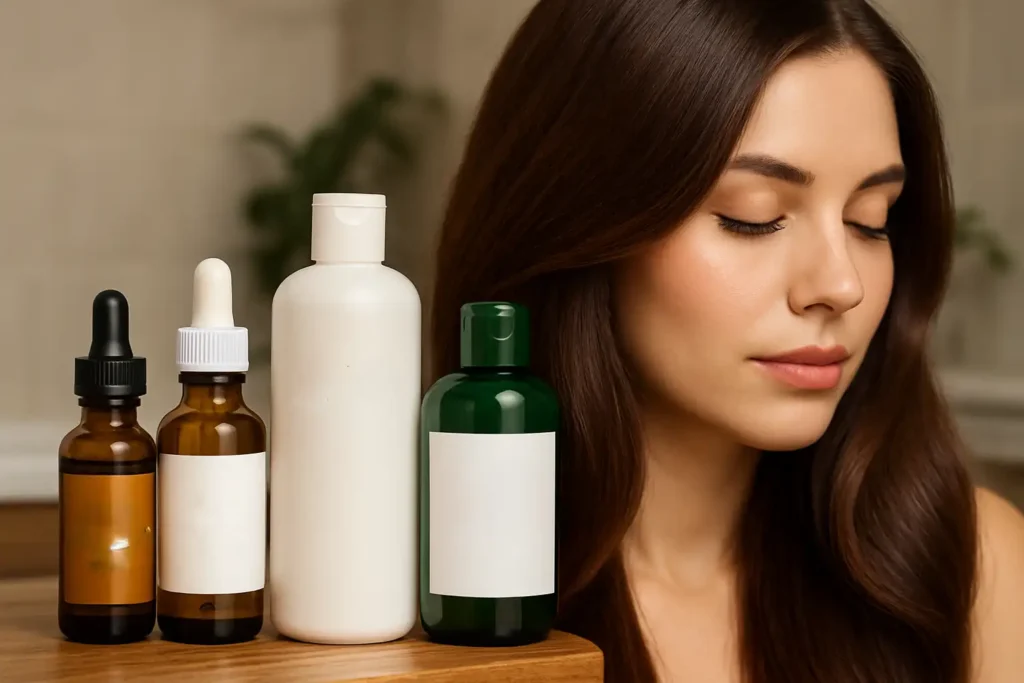
Consistent Hair Care Routine
Consistency is key when it comes to hair growth. A good hair care routine that includes regular washing, conditioning, and nourishing treatments can make a big difference.
If you have curly hair, using the right curly hair products is essential to keep your hair hydrated and reduce breakage.
Healthy hair doesn’t happen overnight, but with the right products and a bit of patience, you’ll see the results.
So, take care of your scalp, try the right hair growth products, and stick to your routine to see your hair flourish.
Customizing Your Hair Care Routine for Every U.S. Climate
Did you know that where you live can impact how you care for your hair? From the humid heat of Florida to the dry winters in Michigan, the climate plays a big role in how your hair reacts. Let’s dive into how to adjust your hair care routine based on the region you live in.
Humidity: Hair’s Best Friend or Worst Enemy?
If you live in a humid climate, like Florida or Texas, you may notice that your hair gets frizzy or loses volume.

Humidity can make your hair swell and become unmanageable. To fight this, try using shampoo for oily hair or dry shampoo to control excess moisture and oil.
Adding a lightweight sulfate-free shampoo can also help keep your hair from becoming too weighed down.
Dry Climates: Hydration Is Key
On the flip side, if you live in dry areas like Arizona or Nevada, your hair might feel more brittle or lack moisture.
Dry air can suck the hydration out of your strands. To keep your hair healthy and nourished, use moisturizing curly hair products if you have curls or a rich conditioner that helps lock in moisture.
Avoid frequent washing, and make sure to use sulfate-free shampoo to prevent stripping your hair of its natural oils.
Cold Weather: Protecting Your Hair
In colder climates like Michigan, indoor heating can make your hair dry and static-prone. Opt for products that add moisture without weighing down your hair.
Using the best shampoo for hair fall can help prevent breakage during the harsh winter months. A deep-conditioning mask or leave-in conditioner can also protect your hair from the cold air.
By adjusting your routine based on where you live, you can keep your hair looking its best no matter the weather!
Mastering the Art of Reading Hair Care Labels
When it comes to hair care, the ingredients list can be overwhelming. With so many products claiming to be “clean” or “safe”, it’s easy to feel lost.
But understanding how to read hair care labels can make all the difference in choosing the right products for your hair.
What to Look for in Ingredients
Start by looking at the first few ingredients. These make up the bulk of the product and will tell you a lot about how it works.
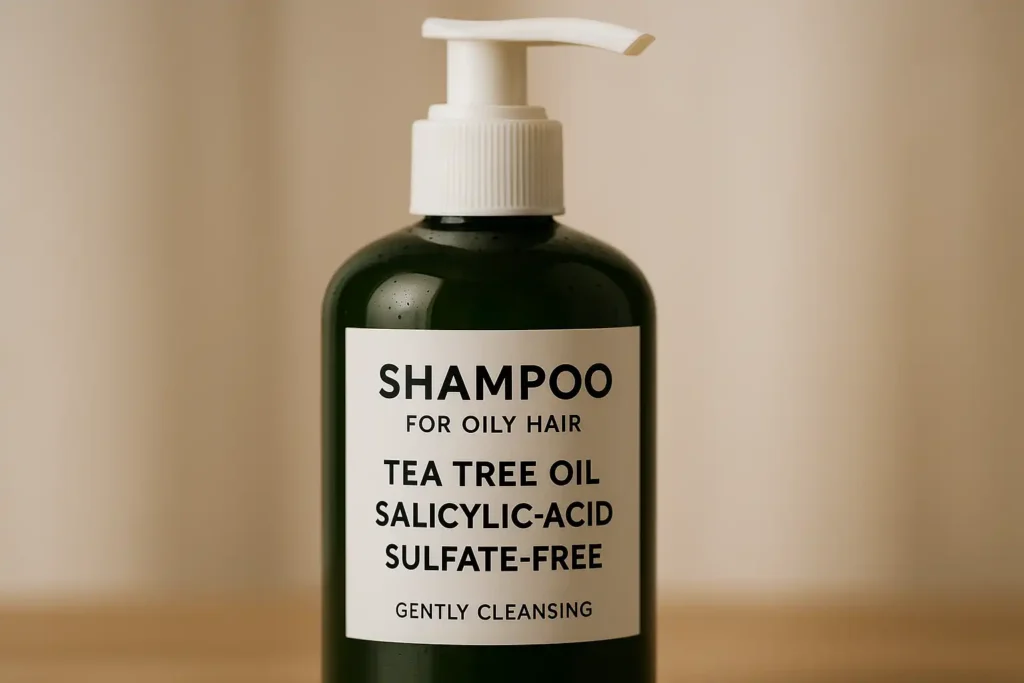
For example, if you’re looking for shampoo for oily hair, you’ll want a formula with ingredients that help remove excess oil without stripping the hair.
Ingredients like tea tree oil or salicylic acid can help control oil, while sulfate-free shampoo is gentler on your scalp.
Avoid Harsh Chemicals
It’s also important to know which ingredients to avoid. Sulfates, silicones, parabens, and alcohols can be harsh on your hair.
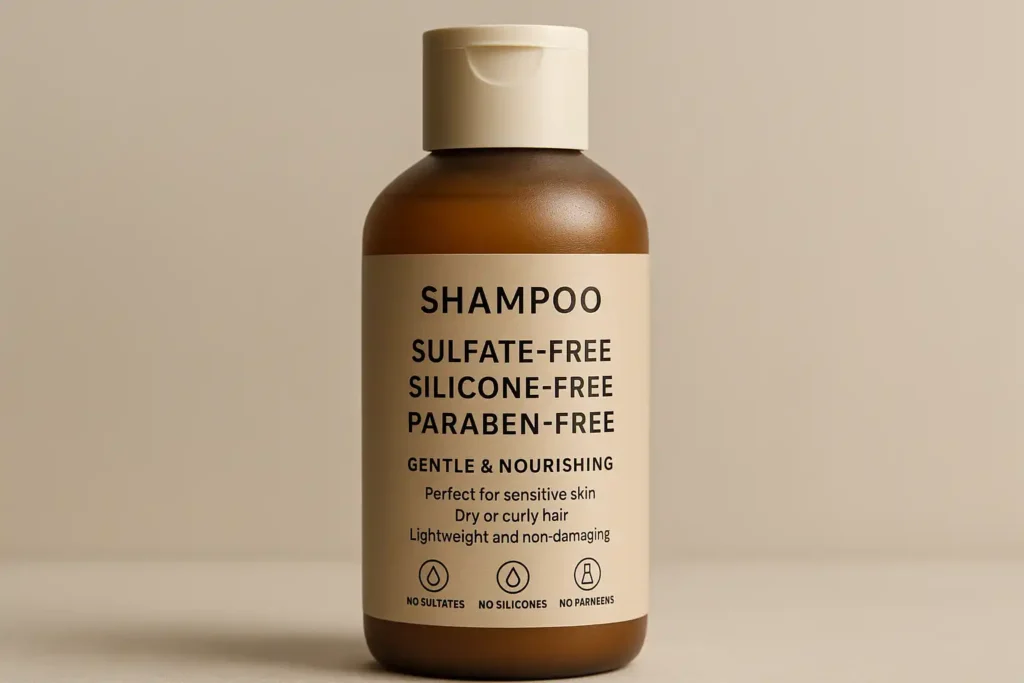
Especially if you have sensitive skin or dry hair. Sulfate-free shampoo is a great choice for anyone looking to avoid these chemicals and keep their hair nourished.
If you have curly hair, look for curly hair products that are free from silicones, as they can weigh down curls and cause build-up.
“Clean Beauty” and Labels
In the beauty world, the term “clean beauty” is used a lot, but what does it really mean? Clean beauty products typically avoid harmful ingredients like parabens, sulfates, and phthalates.
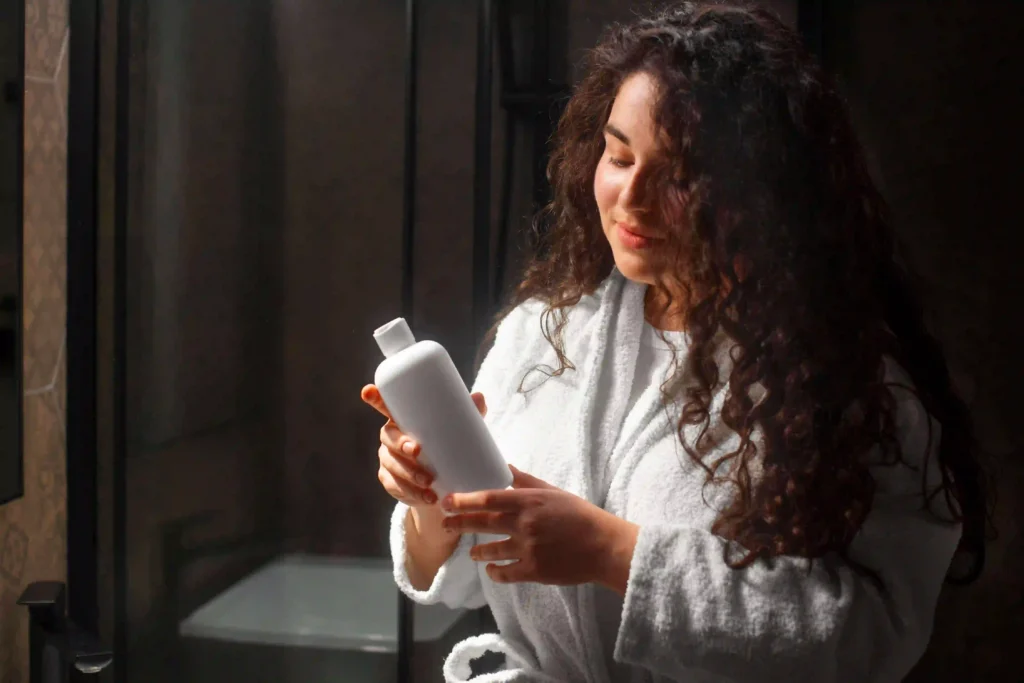
While this is a great starting point, it’s still important to check for specific ingredients that work for your hair type.
If you have thinning hair, try a shampoo for hair fall that contains biotin or caffeine to support hair strength.
Understanding hair care labels empowers you to choose products that truly benefit your hair.
With a little knowledge, you can easily make the best choice for your hair care routine.
Men’s Hair Care: Simple Tips for Strong, Healthy Hair
Men’s hair care doesn’t have to be complicated. With the right products and routine, you can keep your hair looking its best with minimal effort. Whether you’re dealing with thinning hair, styling needs, or oily scalp issues, there’s a product for you.

Shampoo for Oily Hair
For men with oily hair, it’s important to use a shampoo for oily hair that can cleanse without stripping your scalp.
Look for a gentle, sulfate-free shampoo to maintain balance and prevent your scalp from producing excess oil. Using dry shampoo in between washes can also help keep things fresh without over-washing.
Tackling Thinning Hair
Thinning hair can be a concern for many men. To help prevent hair fall, try shampoo for hair fall that contains ingredients like biotin or caffeine.
These ingredients can help strengthen hair and promote healthier growth. Along with hair growth products, consistency is key to seeing results over time.
Styling and Maintaining Healthy Hair
If you like to style your hair, use products that won’t weigh it down or damage it. For men with curly hair, using the right curly hair products will define your curls and keep them frizz-free. Avoid heavy gels or products with harsh chemicals like sulfates and silicones, which can damage your hair over time.
Basic Routine for Healthy Hair
A simple hair care routine involves washing your hair 2-3 times a week with the right shampoo, conditioning regularly, and using a leave-in conditioner for extra moisture.
Keeping things simple and finding the right products for your hair type is all it takes to maintain healthy, strong hair.
With the right tools, men’s hair care can be easy and effective.
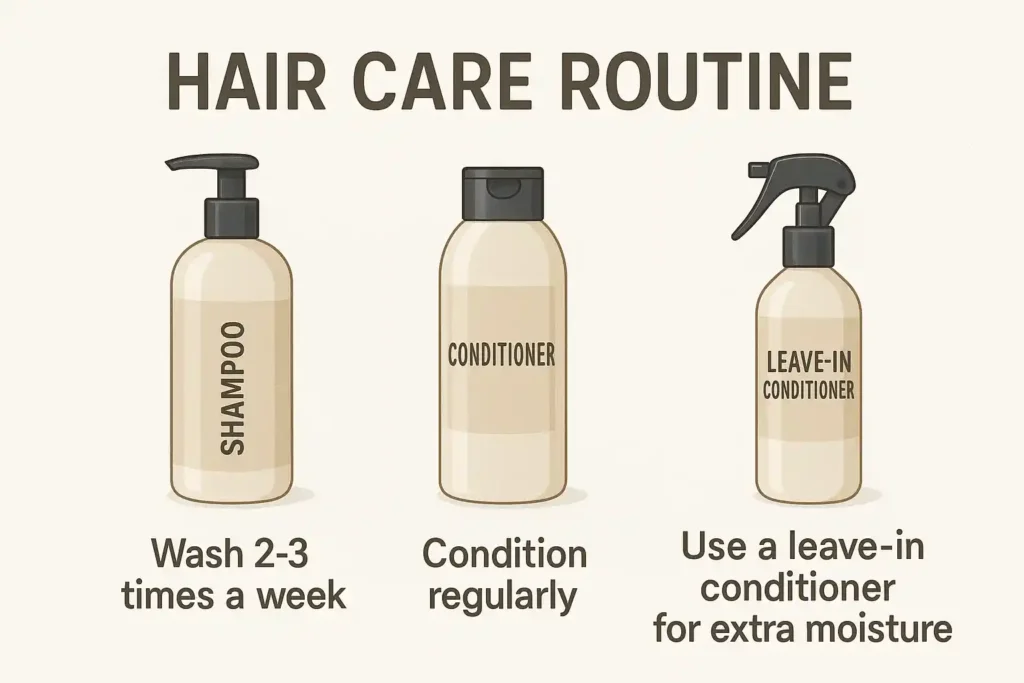
Maintaining Healthy Color-Treated Hair: Tips and Tricks
Color-treated hair requires extra care to keep it looking vibrant and healthy. Whether you’re rocking blonde highlights, a bold red, or a sleek black dye, the right hair care routine can make all the difference in preserving your color and preventing damage.
Choose the Right Shampoo
One of the most important steps is using the right shampoo. Sulfate-free shampoo is a must for color-treated hair.
Sulfates can strip away the color and leave your hair looking dull. Instead, go for a gentle sulfate-free shampoo that cleanses without removing your hair’s color.
Look for shampoos that are specifically designed for color-treated hair to ensure they help protect your color.
Hydrate and Nourish
Coloring your hair can leave it dry and brittle, so hydration is key. Use a moisturizing conditioner to lock in moisture and prevent breakage.
You can also add curly hair products if you have curls, as they provide added hydration and help maintain your curl pattern.
Deep conditioning treatments once a week will also help restore lost moisture and keep your hair healthy.
Protect Your Hair
Sun exposure and heat styling can fade your color faster. Use heat protectant sprays before styling, and consider wearing a hat when out in the sun.
Also, try to avoid washing your hair too often, as frequent washing can cause color to fade quicker. Dry shampoo can be a great alternative to keep your hair fresh without the need for washing.
Maintaining color-treated hair doesn’t have to be difficult. With the right shampoo, moisturizing treatments, and a little extra protection, you can keep your color looking fresh and your hair healthy.
Trending Hair Styles for 2025: What’s In and What’s Out
As we move into 2025, new hair styles and trends are taking over. Whether you’re looking to refresh your look or want to stay ahead of the game, understanding the current trends can help you choose a style that suits both your personality and hair type.
Low-Maintenance Cuts
One of the top trends in 2025 is low-maintenance cuts that are both stylish and easy to manage. Think of the classic bob, whether it’s straight or slightly tousled, it’s easy to maintain and looks great on almost everyone.
For those with curly hair, a curly bob is an excellent way to keep things chic without spending too much time on styling.

Warm Hair Colors
Warm hues are making a big comeback in 2025. Shades like honey blonde, rich caramel, and warm copper are perfect for adding dimension and shine to your hair.
These colors look great on all hair types, and they bring out natural undertones. If you have color-treated hair, make sure to use a sulfate-free shampoo to keep your color vibrant and prevent it from fading too quickly.
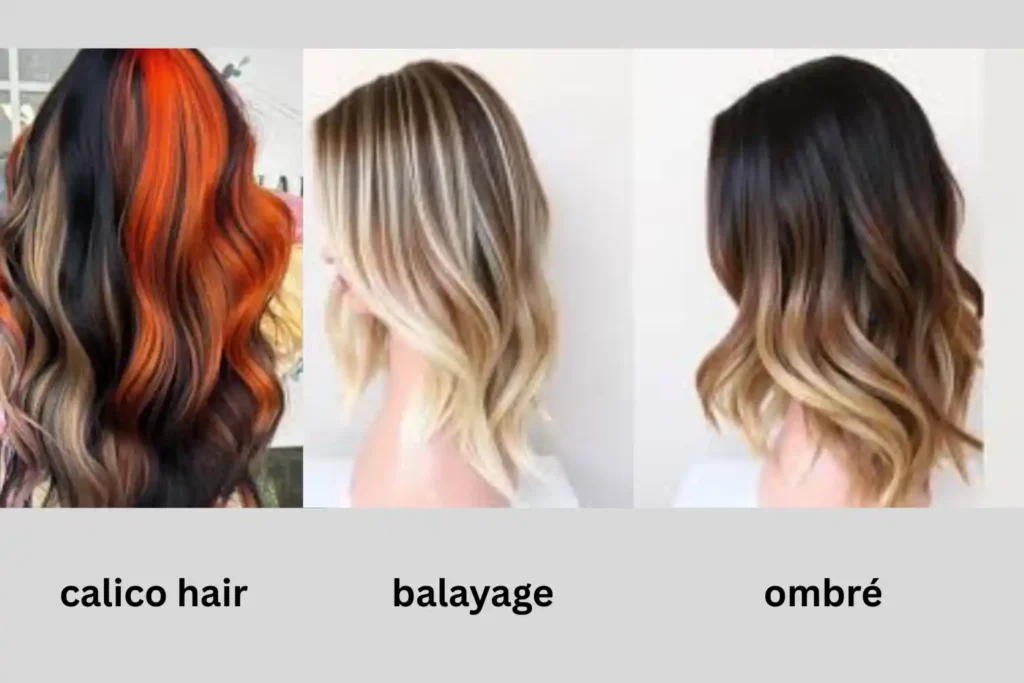
Hair Care and Styling for Healthy Results
No matter what style you choose, the key to making it work is a solid hair care routine. If you have oily hair, using shampoo for oily hair will help keep your roots fresh and balanced.
On the other hand, if you have dry hair, don’t forget to hydrate with curly hair products or a nourishing conditioner.
2025 is all about low-maintenance yet trendy styles that complement your natural hair. Whether you’re rocking a bob or a warm, dimensional color, make sure your hair care routine is up to date to keep your hair looking healthy and vibrant all year long.
Budget vs Premium Hair Care: What’s Worth It?
When it comes to hair care, there’s always a debate about whether to go for budget-friendly products or splurge on premium brands. So, what’s actually worth your investment? Let’s break it down.
Budget-Friendly Options
There are many affordable hair care products that get the job done. For example, you can find shampoo for oily hair or anti dandruff shampoo at drugstores that cleanse well without breaking the bank.
If you’re on a budget, look for basic formulas that offer gentle cleansing and moisture without any extra frills. Dry shampoo is another affordable product that’s great for refreshing your hair between washes.

Premium Products: Are They Worth It?
Premium hair care products often come with added benefits like advanced ingredients, extra nourishment, or specialized formulas. For example, if you have color-treated hair, sulfate-free shampoo can help preserve your color without stripping it. Similarly, curly hair products from high-end brands may be specially formulated to define curls and reduce frizz.
Investing in premium hair growth products can also be a game-changer, especially if you’re looking for products that specifically target hair thinning or hair fall. These products may contain higher-quality, effective ingredients that support hair strength and growth.
Finding the Balance
Ultimately, the right choice depends on your hair care needs. If you’re just looking for basic maintenance, budget options can work just fine. But if you want specific results, like preventing hair fall or caring for color-treated hair, investing in premium products can be worth it.
By finding the right balance, you can create a hair care routine that works for you without overspending.
Building a Personalized Hair Care Routine
Creating a hair care routine that works for you is key to having healthy, strong, and beautiful hair. With the right products and habits, your hair can look its best every day. But how do you build a routine that fits your unique needs? Let’s break it down.
Start with the Basics: Shampoo and Conditioner
The first step in any good hair care routine is choosing the right shampoo and conditioner. If you have oily hair, look for shampoo for oily hair that helps balance oil production without stripping your scalp.
If your hair is dry or damaged, opt for a sulfate-free shampoo to keep your natural oils intact. Pair your shampoo with a conditioner that suits your hair’s texture, whether it’s a lightweight one for fine hair or a richer one for thicker, curly hair.
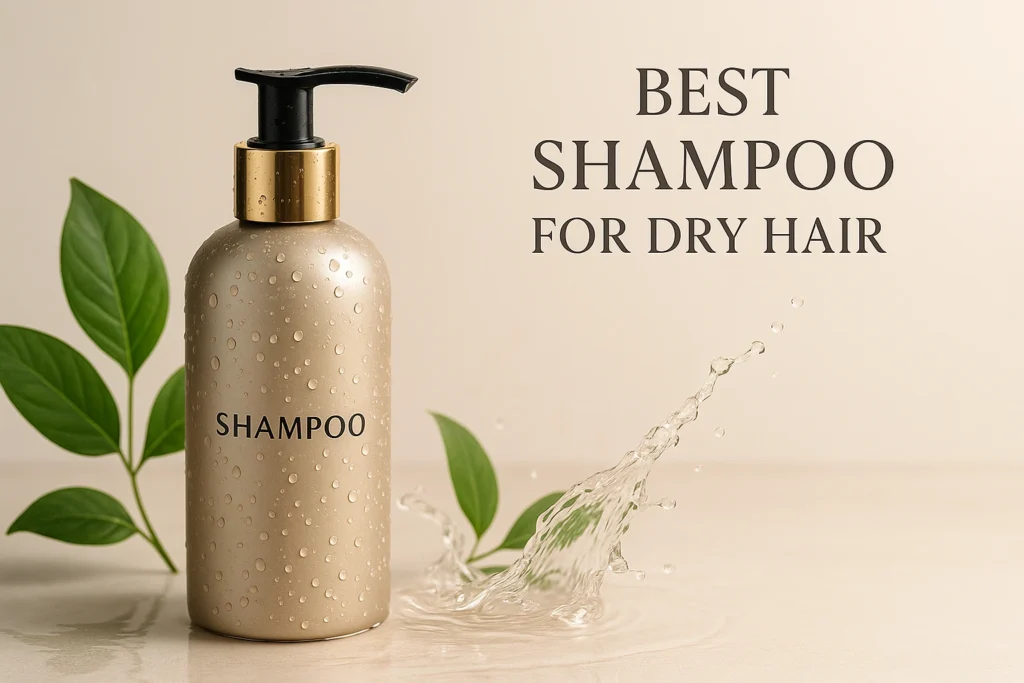

Targeted Treatments
Next, add in treatments that focus on your specific hair needs. If you’re looking to boost hair growth, hair growth products like oils or serums can be added to your routine.
You can also use a best shampoo for hair fall to help strengthen your strands and reduce shedding. If your scalp is prone to flakes, an anti dandruff shampoo can help keep your scalp healthy.
Finishing Touches: Styling and Maintenance
Finally, don’t forget about styling products. Curly hair products can help define curls, while dry shampoo is great for refreshing your hair on non-wash days. Be sure to rotate products as needed, depending on your hair’s needs and the climate.
Building a personalized hair care routine may take a little time, but once you find the right products, it will become second nature. The key is consistency and using products that work for your hair type.
Final Thoughts: Healthy Hair Starts with the Right Routine
Healthy hair doesn’t happen overnight, it’s the result of a solid hair care routine. Whether you’re using shampoo for oily hair, curly hair products, or sulfate-free shampoo, consistency is key. Adding hair growth products or anti dandruff shampoo can also target specific needs.
Make sure to tailor your products to your hair type, and remember that regular care leads to long-lasting results. So, find the products that work for you and stick with it for gorgeous, healthy hair!
Common Hair Care Questions Answered
When it comes to hair care, there are always questions that pop up. Let’s take a look at some of the most common ones and give you the answers you need to keep your hair healthy.
How Often Should You Wash Your Hair?
This depends on your hair type and lifestyle. If you have oily hair, washing every other day or daily may be necessary. For dry or curly hair, you can go longer between washes. Using dry shampoo in between washes helps keep your hair fresh.
Does Rosemary Oil Help with Hair Growth?
Yes! Hair growth products containing rosemary oil can help stimulate hair follicles and promote growth. You can massage it into your scalp for a natural boost.
What’s the Best Shampoo for Hair Fall?
If you’re struggling with hair fall, the best shampoo for hair fall will contain strengthening ingredients like biotin and caffeine. Look for formulas that nourish the scalp and improve hair health.
Should You Use Sulfate-Free Shampoo?
If you have color-treated or sensitive hair, sulfate-free shampoo is the way to go. It’s gentler on your hair and helps maintain moisture without stripping your natural oils.
Can You Use Anti-Dandruff Shampoo Every Day?
It’s okay to use anti dandruff shampoo if needed, but if your dandruff is mild, you can alternate with a regular shampoo to avoid drying out your scalp.
Answering these questions can help you refine your hair care routine and choose the right products for your hair type. The key is consistency!
